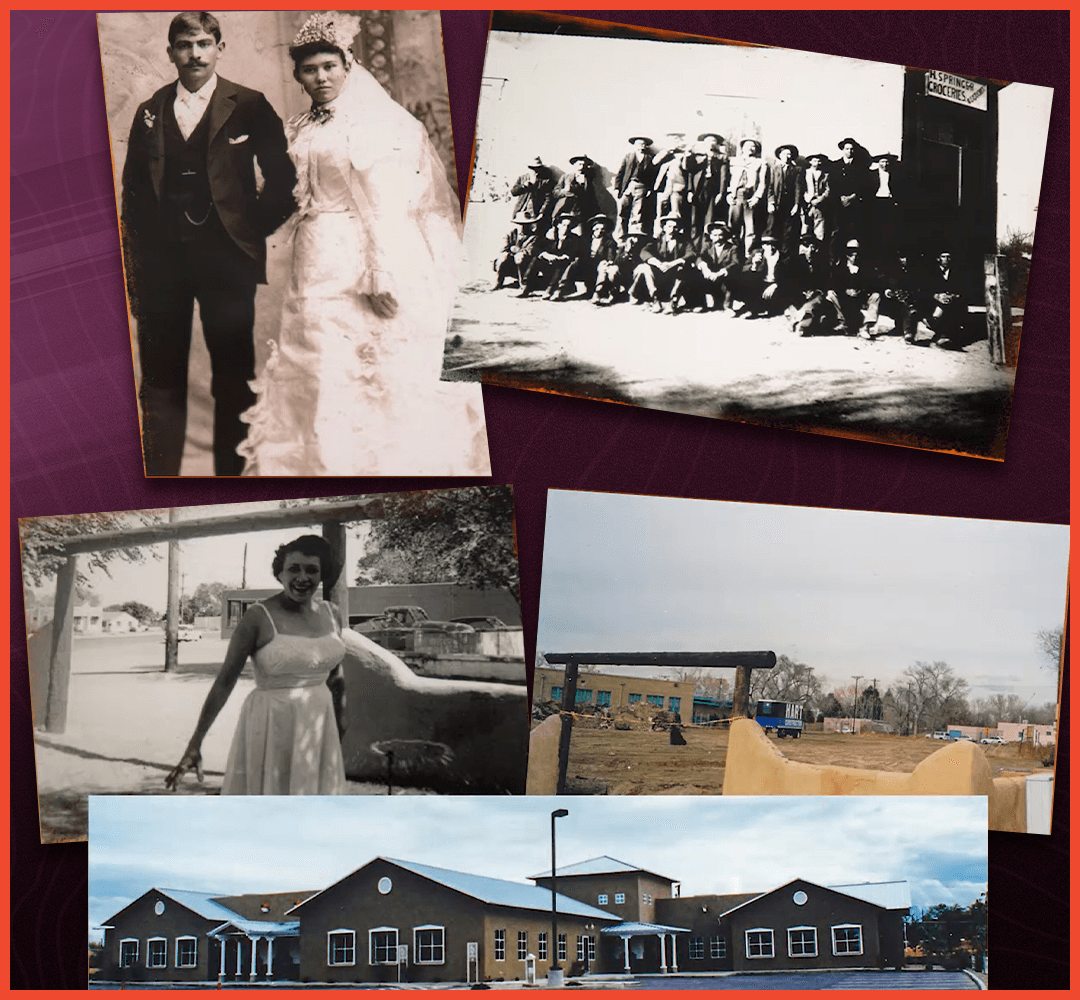
Albuquerque Spinal Cord Injury Attorneys
Filing a Catastrophic Spine Injury Claim
A spinal cord injury is one of the most devastating, life-changing injuries a person can sustain. Victims of these catastrophic injuries are likely to face significant physical, emotional, and financial challenges, ranging from chronic pain to exorbitant medical bills to weeks, months, or even years out of work as they navigate the recovery process.
At Martinez, Hart, Sanchez & Romero, we understand just how difficult it is to move forward with your life after a spinal cord injury. That is why our team is dedicated to helping injured victims and their families fight for the justice and fair compensation they are owed. With more than 100 years of collective experience and a long, proven track record of success, we have what it takes to be your voice and stand up for your rights throughout the legal process.
If you or someone you love suffered a spine injury due to the negligence of another, contact our Albuquerque spinal cord injury lawyers at (505) 806-1780 today for a free consultation.
What is a Spinal Cord?
The spinal cord is a long, thin, tubular bundle of nervous tissue that extends from the base of the brain down through the vertebral column (spine). It serves as a crucial pathway for transmitting sensory and motor signals between the brain and the rest of the body.
Here are the parts of the spine, along with the corresponding vertebrae:
- Cervical spine: Located in the neck region, the cervical spine consists of seven vertebrae, labeled C1 to C7. The top two cervical vertebrae, C1 and C2, are called the atlas and axis, respectively.
- Thoracic spine: The thoracic spine is situated in the upper and mid-back region and comprises twelve vertebrae, labeled T1 to T12. Each thoracic vertebra is associated with a pair of ribs, forming part of the rib cage.
- Lumbar spine: Found in the lower back, the lumbar spine consists of five vertebrae, labeled L1 to L5. The lumbar vertebrae are the largest and strongest of the mobile vertebrae, providing support for the upper body.
- Sacral spine (sacrum): The sacrum is a triangular-shaped bone formed by the fusion of five sacral vertebrae, labeled S1 to S5. It is located between the lumbar spine and the coccyx and forms the back part of the pelvis.
- Coccygeal spine (coccyx): Commonly known as the tailbone, the coccyx is composed of four fused vertebrae, although the number can vary. It is located at the bottom of the vertebral column and serves as an attachment site for ligaments and muscles.
Each vertebra consists of various components, including the vertebral body, vertebral arch, spinous process, transverse processes, and vertebral foramen. The vertebral column provides structural support, protects the spinal cord, and allows for flexibility and movement of the trunk and head.
Overall, the spinal cord plays a critical role in facilitating communication between the brain and the body, allowing for voluntary movement, sensation, and reflexive responses to stimuli. Damage to the spinal cord can result in significant sensory, motor, and autonomic dysfunction, depending on the location and severity of the injury.
Types of Spinal Cord Injuries
While there are many different types of spinal cord injuries, they are generally categorized into the following two classifications:
- Complete: A complete spinal cord injury occurs when all communication is lost between the brain and the body below the point of injury. This results in a complete loss of motor and sensory function, which may present as partial or total paralysis, as well as other complications, such as incontinence and sexual dysfunction.
- Incomplete: An incomplete spinal cord injury occurs when some level of communication is retained between the brain and the body below the point of injury. Though they are generally considered “less severe” than complete spinal cord injuries, incomplete spinal cord injuries can still result in significant physical and emotional challenges for victims.
Spinal cord injury-related paralysis may be partial or complete. Examples of partial paralysis include paraplegia, in which the trunk, legs, and pelvic organs are paralyzed, and triplegia, in which both legs and one arm or both arms and one leg are paralyzed. Complete paralysis, sometimes referred to as “paralysis from the neck down,” involves paralysis of all four limbs and the trunk of the body.
What Are the Most Common Causes of Spinal Cord Injuries?
Spinal cord injuries arise from all types of serious accidents and traumatic events. However, certain incidents are statistically more likely to lead to spine injuries than others.
The most common causes of spinal cord injuries include:
- Car, truck, motorcycle, and other vehicle accidents
- Falls, including slip and falls and falls from heights
- Violence, including assault and other crimes
- Sports- and recreation-related accidents
- Medical malpractice, including surgical errors
- Workplace, construction, and industrial accidents
Certain medical conditions and illnesses, such as autoimmune diseases and vitamin deficiencies, can also lead to spine injuries, and alcohol use, age, and failure to use protective gear all increase the risk of a severe spinal cord injury.
Signs of Spinal Cord Injury
The signs and symptoms of a spinal cord injury can vary depending on the severity and location of the injury along the spine. Here are some common signs to watch for:
- Loss of Movement: One of the most apparent signs of a spinal cord injury is partial or complete loss of movement (paralysis) below the level of the injury. This paralysis can affect one or both sides of the body depending on the extent of the injury.
- Loss of Sensation: Patients may experience a loss of sensation, including the ability to feel touch, heat, cold, or pressure below the level of the injury.
- Difficulty Breathing: If the injury is high on the spinal cord, it can affect the muscles involved in breathing, leading to difficulty in breathing or shortness of breath.
- Loss of Bladder or Bowel Control: Spinal cord injuries can disrupt communication between the brain and the nerves controlling the bladder and bowel function, leading to loss of control over urination or defecation.
- Muscle Spasms: Involuntary muscle spasms or exaggerated reflexes can occur below the level of the injury.
- Pain or Intense Pressure in the Neck or Back: A sudden, severe pain or pressure in the neck or back at the time of injury may indicate spinal cord trauma.
- Numbness or Tingling: Patients may experience numbness or tingling sensations, known as paresthesia, below the level of the injury.
- Difficulty Walking or Balance Problems: Some individuals may find it challenging to walk or maintain balance due to weakness or loss of sensation in the legs.
- Loss of Sexual Function: Spinal cord injuries can affect sexual function, including arousal, sensation, and orgasm.
- Changes in Blood Pressure or Heart Rate: Spinal cord injuries can also disrupt autonomic nervous system functions, leading to changes in blood pressure, heart rate, or sweating.
The Short- & Long-Term Effects of Spinal Cord Injuries
Spinal cord injuries are severe injuries with many varied, life-altering effects. Victims may experience acute and/or chronic pain, permanent loss of function, immobility, and numerous other physical effects. They may suffer from certain mental health conditions as a result of their injury, including depression and post-traumatic stress disorder (PTSD).
The financial effects of a spinal cord injury are just as extreme. Victims and their families may find themselves suddenly facing massive medical bills for extensive, ongoing treatment. To make matters worse, the physical and emotional effects of the injury can prevent the victim from returning to work for months or even years; in some cases, victims will be completely unable to participate in any form of gainful activity due to their injuries. This puts undue stress on injured individuals, not only because they are unable to earn any income but also because they may lose their employment-sponsored healthcare, making the recovery process even more challenging.

-
"I can't seem to say enough about the people at this law firm. I was treated with the greatest experience ever. My case wasn't a very large case, but, non the less I was treated with the upmost respect and treatment of a huge case."Christopher C.
-
"Not only are they highly competent, ethical, smart and efficient, they are very kind. They have provided the best representation and assistance imaginable and I would, without any reservation whatsoever, highly recommend this law firm."Dorian D.
What Types of Damages Can Be Recovered in a Spinal Cord Injury Case?
While the potential value of your claim depends on various factors—including the severity of your injury and the degree of fault (if any) you may have had in causing the incident, among others—many spinal cord injury victims are able to recover certain types of damages.
By filing a catastrophic injury claim, you could recover compensation for the following:
- Past, current, and future medical bills associated with treating your injury
- Any physical and/or mental pain and suffering you endured as a result of your injury
- Lost income/wages as a result of time you took off work to receive treatment/recover
- Loss of earning ability and future income associated with permanent injury or impairment
- Emotional distress, anguish, disfigurement, and inconvenience related to your injury
- Miscellaneous out-of-pocket expenses, such as transportation to and from medical appointments and the cost of in-home assistance or care
In certain cases, you may even be eligible for punitive damages. Such damages are meant to punish the liable party (rather than compensate you for specific losses) and are typically only available in cases involving gross negligence or willful/wanton misconduct.
At Martinez, Hart, Sanchez & Romero, our Albuquerque spinal cord injury attorneys work diligently to recover full and fair compensation for our clients. We investigate and evaluate claims to determine the full extent of our clients’ damages, then aggressively pursue just settlements from insurance companies and other liable parties. Whenever necessary, we are fully prepared and willing to go to trial.
How Long Do Spinal Cord Injury Cases Take?
The amount of time it will take to resolve your case depends on many factors, including but not limited to:
- The overall complexity of your case
- The severity of your injury and its effects
- The overall value of your damages
- How long your medical treatment takes
- When you reach maximum medical improvement
- The insurance company’s willingness to settle
- Whether your case goes to trial
Because spinal cord injury cases tend to be more complex than other personal injury claims involving less serious injuries, they often take longer to resolve. However, at Martinez, Hart, Sanchez & Romero, we do everything possible to help our clients achieve swift, favorable settlements. When this is not possible, we are ready to fight for them in court.
How a Spinal Cord Injury Lawyer Can Help You with Your Case
Proving the severity of your injury and its short- and long-term effects on your life can be challenging. Right now, you should be focused on getting the medical care and treatment you need. You shouldn’t have to worry about gathering evidence and fighting with the insurance company for a fair settlement. Instead, trust your case to the team at Martinez, Hart, Sanchez & Romero.
We can handle every legal detail so that you can focus on your physical and emotional recovery. We know that this is a very difficult time in your life, which is why we offer compassionate and attentive legal support throughout the entire process. We are always available via our 24/7 answering service, and we respond quickly to all calls, emails, and messages.
Our Albuquerque spine injury lawyers know how to build powerful, persuasive claims based on solid evidence. We often work with accident reconstructionists, economists, medical professionals, and other specialists who provide expert testimony to bolster our clients’ cases. We have developed a solid reputation with local judges, investigators, insurance adjusters, and fellow attorneys, and we know how to effectively advocate for you, every step of the way.
For a free consultation, call (505) 806-1780 or contact us online. Hablamos español.
"Not only are they highly competent, ethical, smart and efficient, they are very kind. They have provided the best representation and assistance imaginable and I would, without any reservation whatsoever, highly recommend this law firm."Dorian D.

Martinez, Hart, Sanchez & Romero, P.C. is a local law firm with local and national recognition for having the expertise to handle the toughest cases. Over a century ago, David B. Martinez’s grandparents realized their dream of building a general store at the corner of Rio Grande and Indian School. “A century later, David B. Martinez and F. Michael Hart built this law firm on the same corner of Rio Grande and Indian School where David’s family had built their general store.” The corner of Rio Grande and Indian School is now home to Martinez, Hart, Sanchez & Romero, P.C., which holds the same dedication to serving the needs of the surrounding community.






